When people who live in low-density areas think about re-legalizing duplexes, triplexes and fourplexes, they wonder, understandably, about what exactly might happen to their neighborhood.
Will the beautiful Victorian down the block be destroyed? Will all the nice trees be chopped down?
As I write this, Oregon is in the final days of debate over what would be a historic statewide legalization of “middle housing”—duplexes, triplexes, fourplexes, townhomes and cottage clusters—in urban areas. The state House of Representatives passed it yesterday, 43-16. It’s now on the floor of the Senate.
So a lot of Oregonians are wishing for a crystal ball right now. If the state passes this bill and cities and counties spend the next few years shaping its mandate into nuanced local code, what will Oregon cities look like in another 10, 20, 30 years?
People wondering about this: I bring you good news. I know quite a lot about what they’ll look like.
Duplexes, triplexes and fourplexes have been legal in my own low-density neighborhood for the last 39 years.
I would bet you quite a bit of money that most of my neighbors don’t even know. That’s because our neighborhood looks like this:
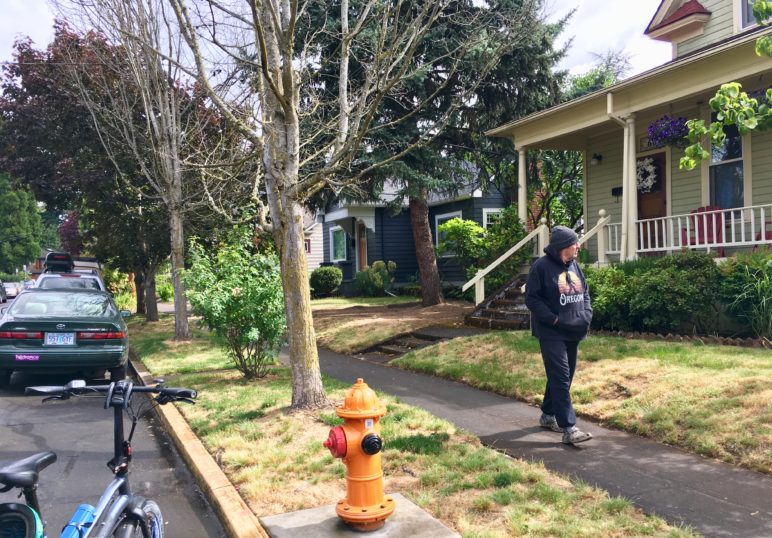
And this:
And this:
The area where my family lives (in a rented backyard cottage) is a little wedge of homes slipped between Northeast Glisan Street and Interstate 84. One of the last few neighborhoods to fill in before Portland’s 1959 ban on middle housing, it was built as a middle-class area, so 10 of the homes in the image above are actually in older duplexes. But most of them aren’t; more than half are detached homes of 1,000 to 2,000 square feet. (There’s also one fourplex, and one accessory unit other than ours.)
Presumably due in part to those existing duplexes, and to the fact that the richer folks one mile closer to downtown would have been more likely to lawyer up against any changes to their area, our neighborhood was one of the places affected by Oregon’s statewide upzone of 1978 to 1982. State regulators had ordered Portland to find room for new housing; the city decided to allow some of it here, among other areas. Portland’s 1980 Comprehensive Plan allowed one home per 1,000 to 2,500 square feet of land here, compared to 5,000 square feet previously.
There was a catch: Instead of actually zoning for this potential middle housing, the 1980 document declared Portland’s intent to zone most of our area for that slightly higher density eventually. But for a fee in the thousands—today it’s up to $15,986—a property owner could claim that higher density immediately.
In other words, if you wanted to build a fourplex, a duplex, or detached homes on narrow lots, you pretty much could.
Over the years, a few people did. This duplex went up in 2004:
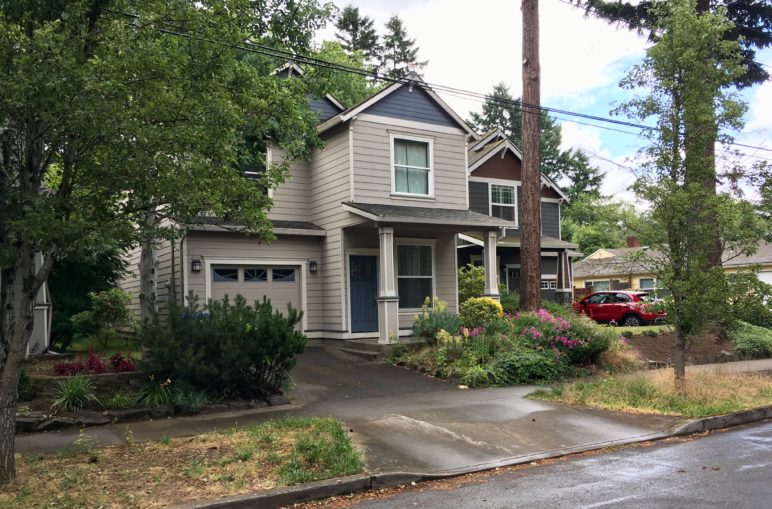 This triplex in 2008 (it’s by far the largest new building, and actually about 50 percent larger than anything Portland’s local zoning reform would allow on low-density lots of this size):
This triplex in 2008 (it’s by far the largest new building, and actually about 50 percent larger than anything Portland’s local zoning reform would allow on low-density lots of this size):
But most homes, as you can tell, have stayed pretty much as they were. A few have been remodeled and resold. Others have probably crumbled a little.
Today, when I walk through my neighborhood to the rail stop, I weave through a pleasant hodgepodge of architectural history, from the 1956 ranch duplex across the street:
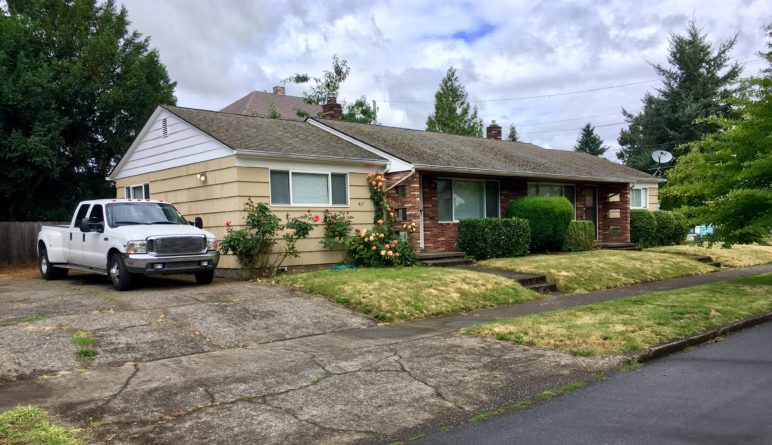 To this 1916 house that always flies a Cascadia flag:
To this 1916 house that always flies a Cascadia flag:
To the 1948 bungalow with four porch-dwelling cats who my wife refers to as The Council:
Somewhat denser housing has been legal on all of these lots for a generation. But because the buildings are in fine shape, it doesn’t make financial sense to tear any of them down for buildings that would be only a bit larger. So these stay in service alongside the newer stuff, providing different housing options for different sorts of neighbors.
Our pocket neighborhood has about 200 low-density residential buildings. All told, 39 years after Portland’s 1980 upzone, 20 homes have been built using the increased density.
For those keeping score, this means that every four years, our little pocket where fourplexes are legal has changed by an average of 1 percent.
It’s not much additional housing, honestly. This is why cities need to allow new apartment buildings, too. But the fact that our neighborhood allows options other than big luxury oneplexes means that the new duplexes and skinny homes that have come in go for about the same prices as the older big-lot homes next door. And even this trickle of new housing means we’re doing more than most other low-density areas to help Portland keep up with its job and population growth.
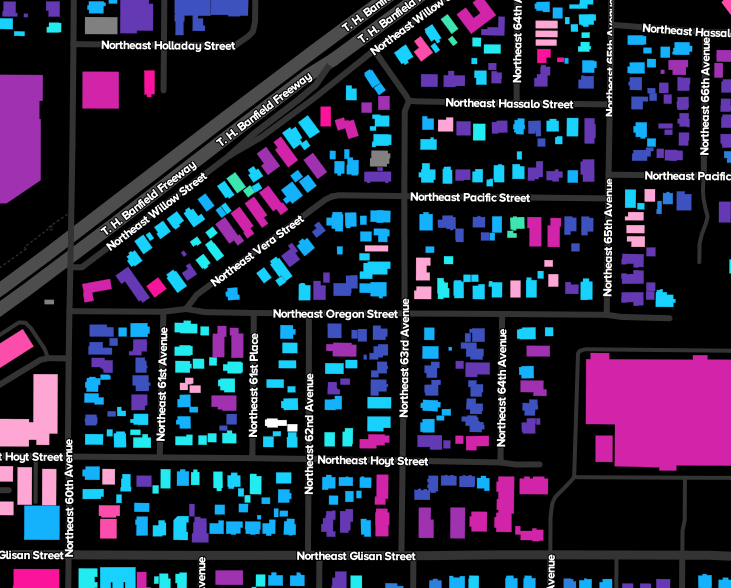
Structures built since 1980 are lighter pink and white; magentas, blues, purples and greens are older. Image by Justin Palmer, used with permission.
Is our area unusual? No. Here is a fact you may not know about Portland: Duplexes have been legal on every corner lot in the city since 1991. But 28 years later, how many of those corner lots actually have duplexes? Just 3.5 percent, according to city records.
I’m not claiming our area is perfectly representative. That $15,000 fee probably slowed redevelopment a bit, though it’s gone now—last year, the city officially upzoned the area. (“Eventually” finally came, though there have been zero new projects so far.) Cities can and should customize local rules about building size for their local situations to find the right balance between growth and disruption, especially in neighborhoods with more vulnerable people than mine. Oregon’s state-level bill gives cities plenty of ways to do this.
But even in the most desirable neighborhoods, where (other things being equal) middle housing will tend to be built first, legalizing fourplexes isn’t going to lead to wholesale change—even if, in some cases, it’d be better for everyone if it did.
Re-legalizing duplexes, triplexes and fourplexes isn’t going to utterly transform a city. It’ll just allow a gradual shift into something slightly livelier, slightly more sustainable, and quite a bit more welcoming than it would otherwise become.
If these measures pass in Oregon and Portland, along with the similar reforms in Seattle and Vancouver, people around the world won’t have to pine for a crystal ball that could see the future of low-density zoning reform.
They’ll just have to spend a little time looking at photos from the thriving, gracefully evolving cities of the Pacific Northwest.


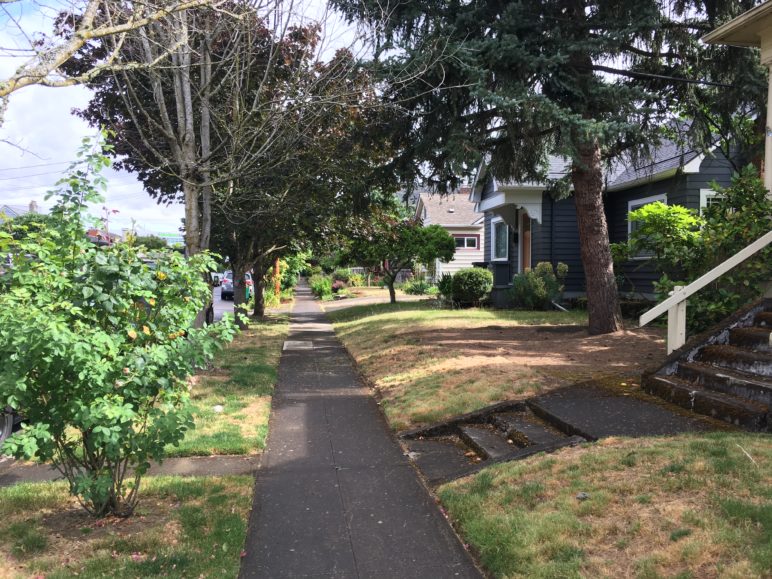

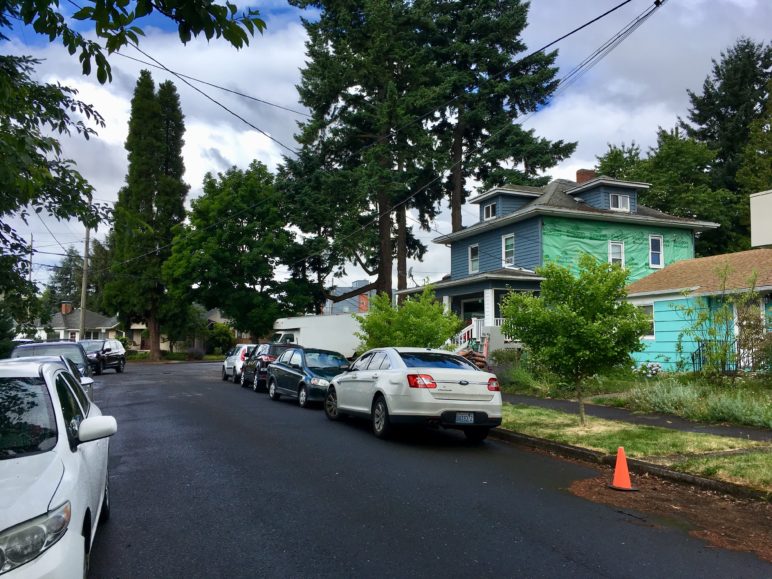
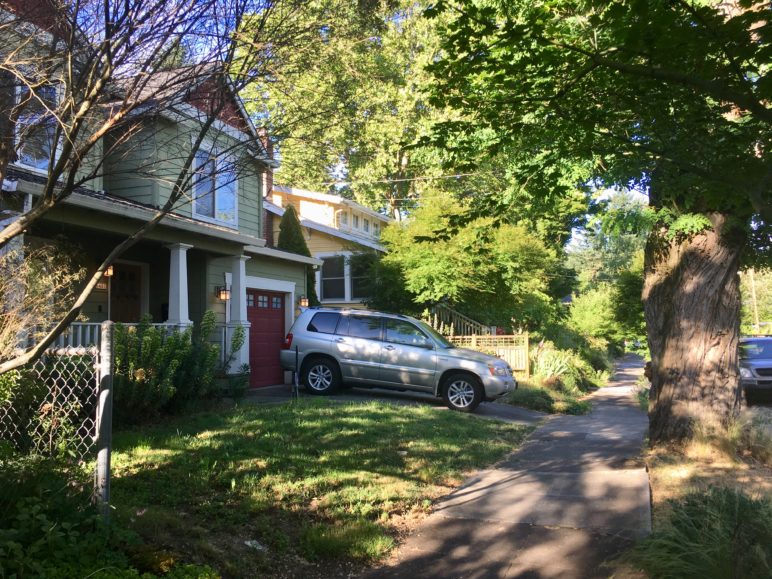
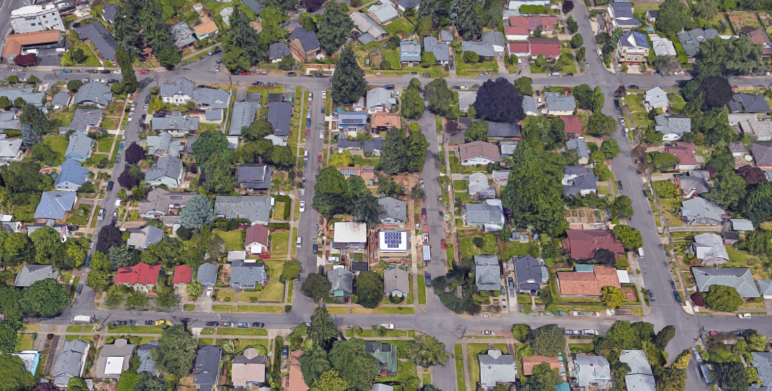
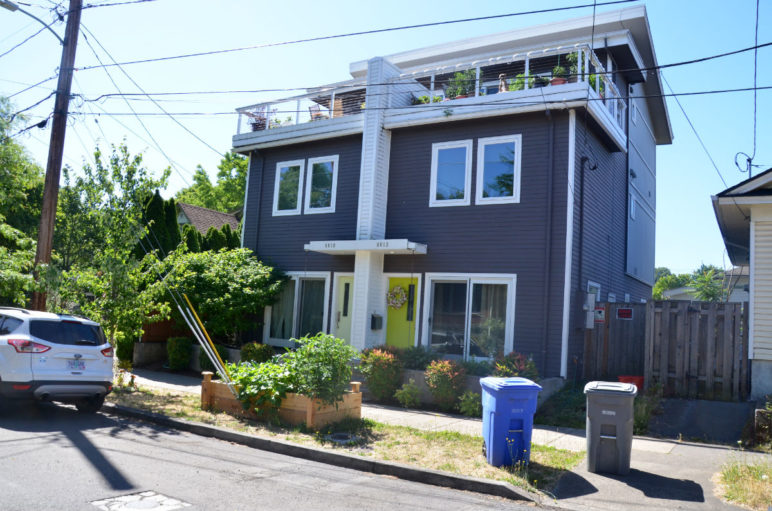
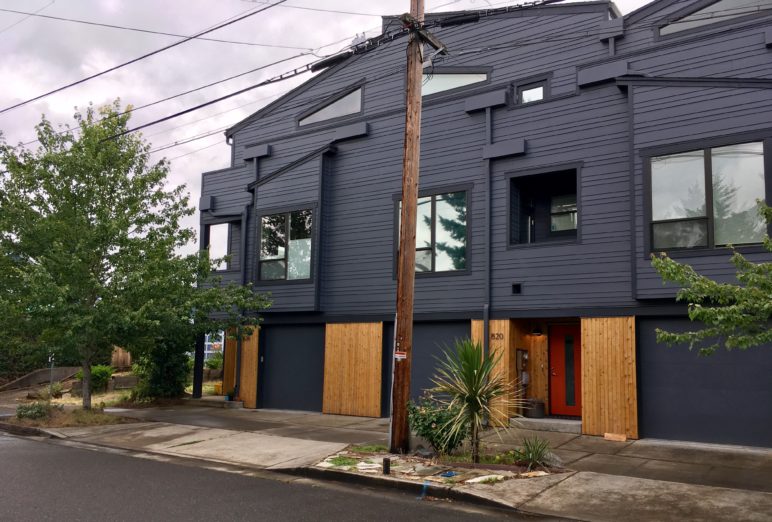
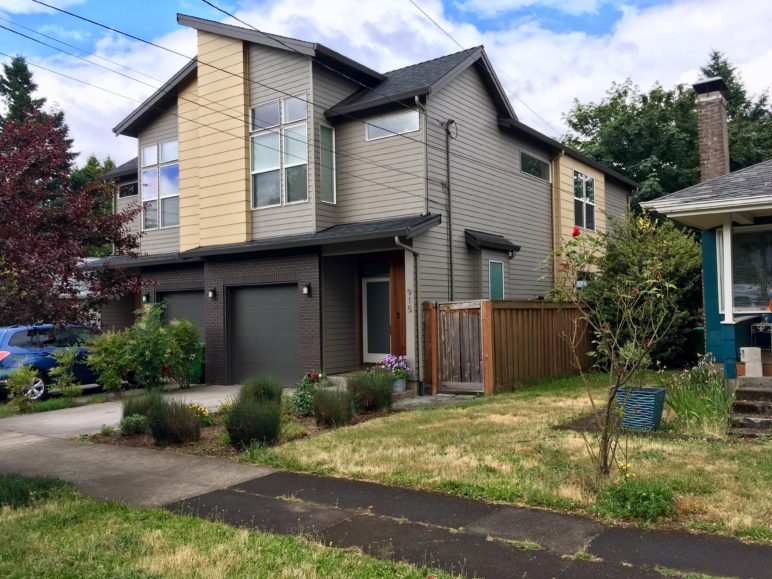
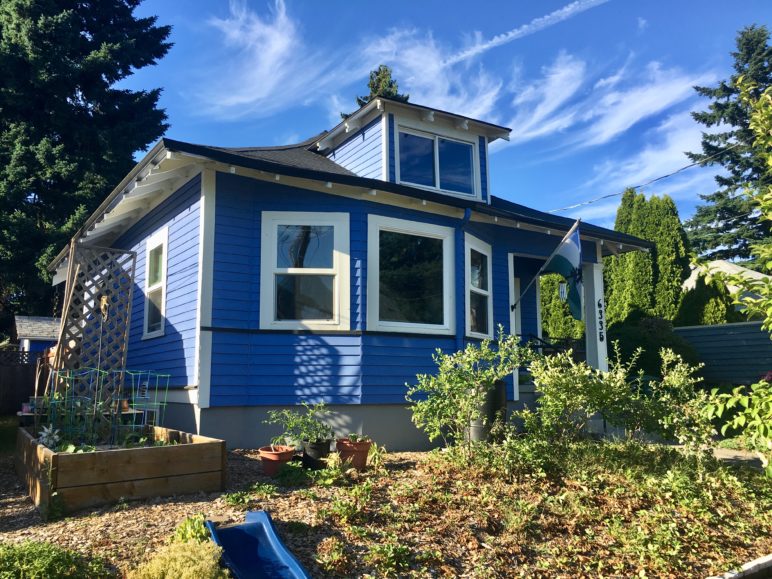
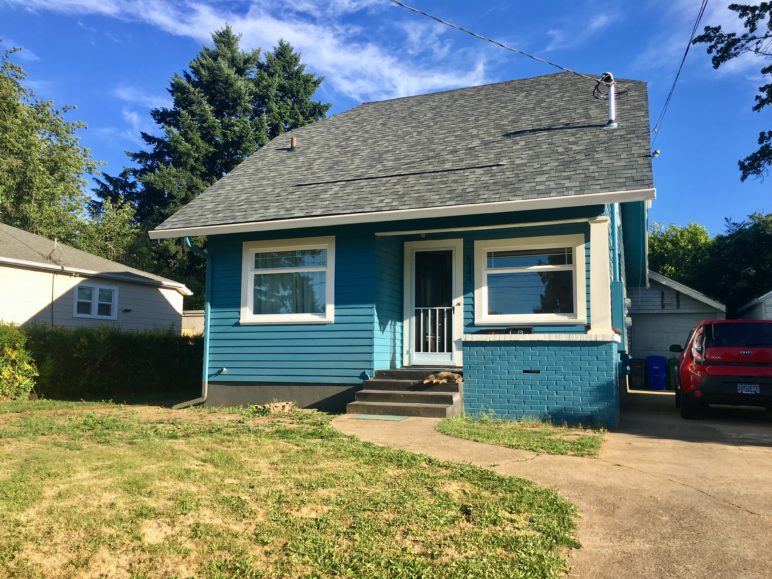






Mark McClure
Thanks, Michael. I appreciate you sharing this personal story. Your perspective refutes many of “The sky is falling!” reactions to HB2001and RIP I’ve heard in Portland, and read on particular web sites and in some neighborhood newsletters.
Sarah Campbell
This tale of Portland is very reassuring to those of us who think organic redevelopment beats mega development by a country mile. However, similar neighborhoods (vintage and density) are experiencing rapid redevelopment throughout central Austin, TX. Tear downs in the neighborhood are monthly if not more frequent (2 were approved earlier in June within 6 blocks of my house and one house is already gone) and what goes up is a large dwelling, often single family, but also duplexes as two units are mostly allowed in these older neighborhoods. Some blocks near me are greater than 50% tear down. And, it is disconcerting.
The current discussion around zoning here would be to force all housing within 5 lots of a major street to become 4 units. Forget heritage trees or stormwater in creeks already experiencing flooding. Our experience here with ADUs is mixed, but a survey by one long-time developer found that only 1 of several hundred ADUs built recently was for affordable tenants. There are plenty of ways to safeguard for these issues and to make the changes more orderly and more positive. That, however, is not the direction we seem to be going. One approach is termed Lean Urbanism. It is a concept worth pursuing to reduce the cost of building, but also to allow for individual and cultural differences to be expressed in the built environment within a neighborhood. (See this video for useful analysis of what is transit inducing density: https://www.youtube.com/watch?v=xlW8GOLrd7U
by the late Hank Dittmar, former Chairman of CNU and co-founder of Lean Urbanism (www.leanurbanism.org) or read his book “My Kind of City” published posthumously by Island Press.
RDPence
This is very interesting and helpful. I roll my eyes at Seattle “urbanists” who show photos of 1920’s duplexes and small apartments, suggesting that’s what would be built today, if only we upzoned.
It’s nice to see images of what’s being built in current time in a real urban neighborhood.
Wesley
People are really discussing forcing homeowners to tear down their buildings to build more densely?
Michael Andersen
No, nobody is. The entire conversation is about letting people build attached homes if they want to, nothing more.
Valerie Vozza
Great article! Now if only Seattle would get on board. I’ve never understood why stacked duplexes aren’t legal here, like they are on the east coast. Why is a side-by-side OK? I think there’s a real opportunity to add 2nd stories to existing one story housing stock, and sell them! I’m not an urban planner, but I know this would be a viable and more affordable option for some people. After talking with a lawyer it was suggested the only way around this would be to “condo-ize” the structure.
Sherri A Schultz
Thank you for compiling this post & photos — it was hopeful & helpful to some of our neighbors in Eugene who are concerned about Oregon’s recent passage of HB 2001.
Dynodon
You are totally ignoring the high density parking problem on the streets. I notice you conveniently post photos with hedges blocking the street parking. There is only so much parking so what’s your brilliant solution for us in So Cal where there is no efficient public transportation and everyone drives a car. Not unusual for every person in the household to have their own car so each single family home already takes up all of the street parking in addition to their packed driveways. Now add your master plan and every single neighborhood becomes a parking nightmare every day.
Michael Andersen
Welcome to Sightline.org, Dynodon! Feel free to continue your journey here.
bernie gizzi
They’re trying to do the same thing in California they say that they’re going to waive the parking limit so do we need to provide to parking spaces for 4 units causing everyone to have to park in the street bad idea by bad officials that need to be voted out of office how’s densely populated areas help with overcrowded schools freeways in prisons not to mention water shortage all the things Democrats complain about their this will help to create
Michael
Don’t block my light, neighbor.
Have had decades of dense apartment life (with few wheelchair accessible choices, btw).
I’ll thank you to
leave my twilight years, in my private yard, undisturbed.
j.denino
I lived in Staten Island, NY from 1966 – 2000 and developers destroyed the charm of the island by building endless cheap townhomes where there were once older homes on a larger piece of land. They would knock down one house and build 12 cheap townhouses in it’s place, etc. Now the island is an overcrowded traffic nightmare. We had to move away due to the crime rate going up, my cars kept getting broken into and stolen. People were always fighting over parking places on the street. They turned the island into Brooklyn but the streets weren’t wide enough in many case to handle all of the excess traffic. Staten Island doesn’t have a subway system either, it’s unlike the other boroughs of NYC. You need a car to live there.